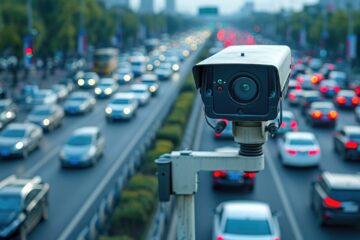In the swiftly evolving retail landscape of today, the pursuit of efficiency and customer engagement is paramount; an endless chase that often leads retail managers towards technological solutions. Of these, QR codes and barcodes stand as leading characters, playing crucial roles in shaping operational prosperity through their varied application.
The Technical Aspects and Data Accommodations
While QR codes and barcodes hail from the same family, serving a shared purpose of encoding data for smooth recovery, it is their design and capacity that sets a stark contrast.
Consider barcodes, these are linear, one-dimensional codes, simplistically storing data within a spectrum of parallel lines. With a capacity to house 20-25 characters, barcodes tactfully manage data such as product identifiers or price, making them a cost-effective ally for inventory management.
Meanwhile, QR codes bring an added layer of complexity. They are two-dimensional, housing a striking 7,000 characters, making room for URLs, text, and manifold multimedia information. It is these QR codes that offer the flexibility of scanning from any direction, amplifying their versatility and accessibility.
Emerging Market Trends and Industry Annexation
When we turn to the market, we notice industries harnessing the power of both technologies, albeit in crafty and innovative ways. QR codes, for instance, are making a striking comeback, bridging the divide between the tangible and virtual worlds. Retailers are riding this wave, utilizing QR codes to amplify customer interaction by giving them immediate access to digital content, engaging promotional material and loyalty points, all a smartphone scan away.
On the other hand, barcodes are the industry staple, specifically in areas of inventory control and point-of-sale systems. Their firm footing in the industry and widespread adoption make them a fundamental tool for efficient product tracking, essential for large-scale operations where precision and speed hold the reins.
When to Use QR Codes
As retail managers play with the idea of interactive customer experiences, QR codes surface as the perfect candidate.
These codes miraculously transform static displays into dynamic interactions, with consumers scanning codes to access detailed product descriptions, intriguing videos, or exclusive offers – all geared to enrich the shopping experience. Moving further ahead into the smartphone era, QR codes facilitate swift transactions and loyalty point collections, adding convenience for the tech-savvy consumer. With the pandemic reshaping retail norms, barcode and QR code specialists have watched this tech gain precedence, and QR codes lead the charge, offering touch-free engagement for product details or direct purchases.
When Barcodes Continue to Rule
Though QR codes bring a host of advantages, there are realms where barcodes still reign supreme.
In an environment where speedy scanning and economical labeling are paramount, the efficiency of barcodes remains unmatched. Their use in tracking products across supply chains endorses this claim. On the other hand, for companies operating within tight financial constraints, barcodes emerge as an affordable solution, demanding minimal technological investment, ideal for small to medium-sized retailers.
In Summary
Choosing between QR codes and barcodes will hinge on your own business objectives and operational demands. With QR codes, you can augment customer engagement and offer enriching interactive experiences. And barcodes? They stand as a reliable, cost-effective solution, promising inventory management and logistical efficiency.
The key lies in strategically incorporating both technologies to optimize your retail operations. By doing so, you fortify internal processes while extending superior customer service, setting the stage for business expansion and fostering enduring customer loyalty.




